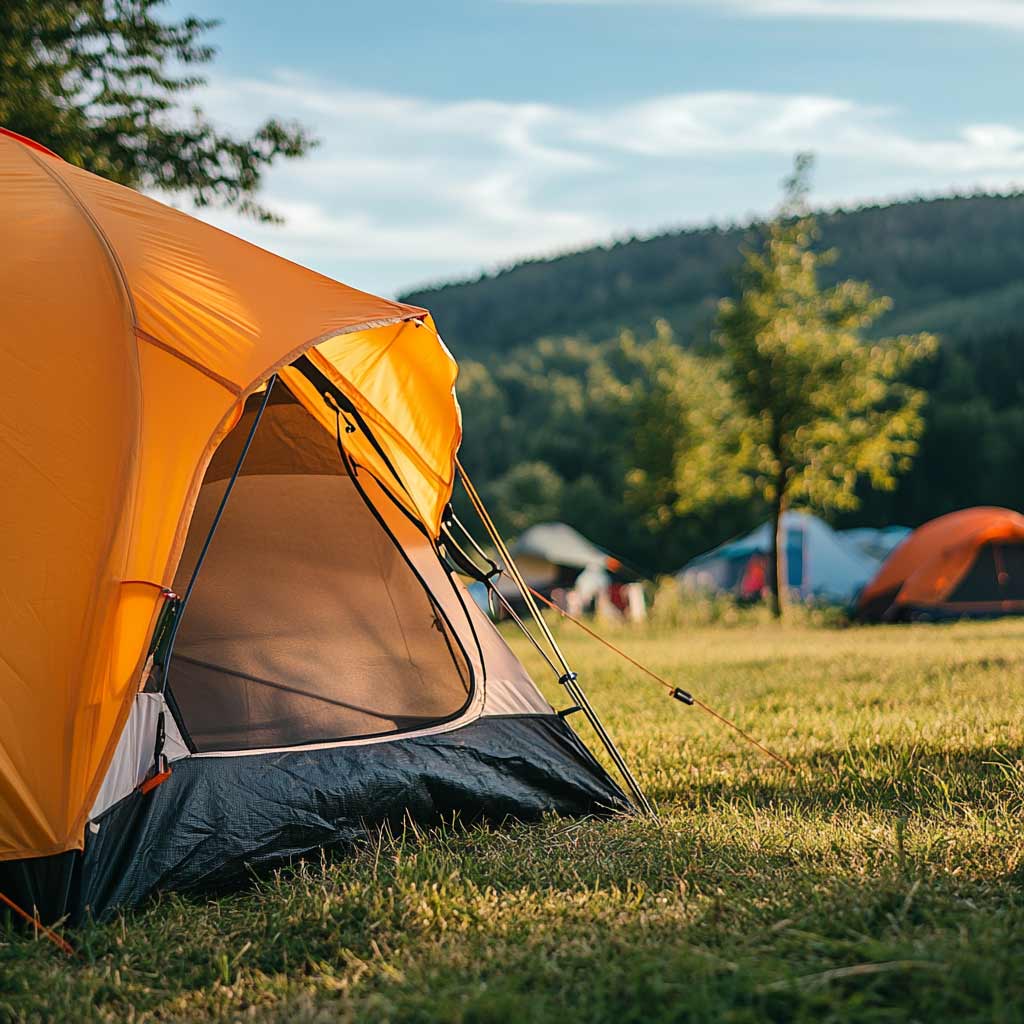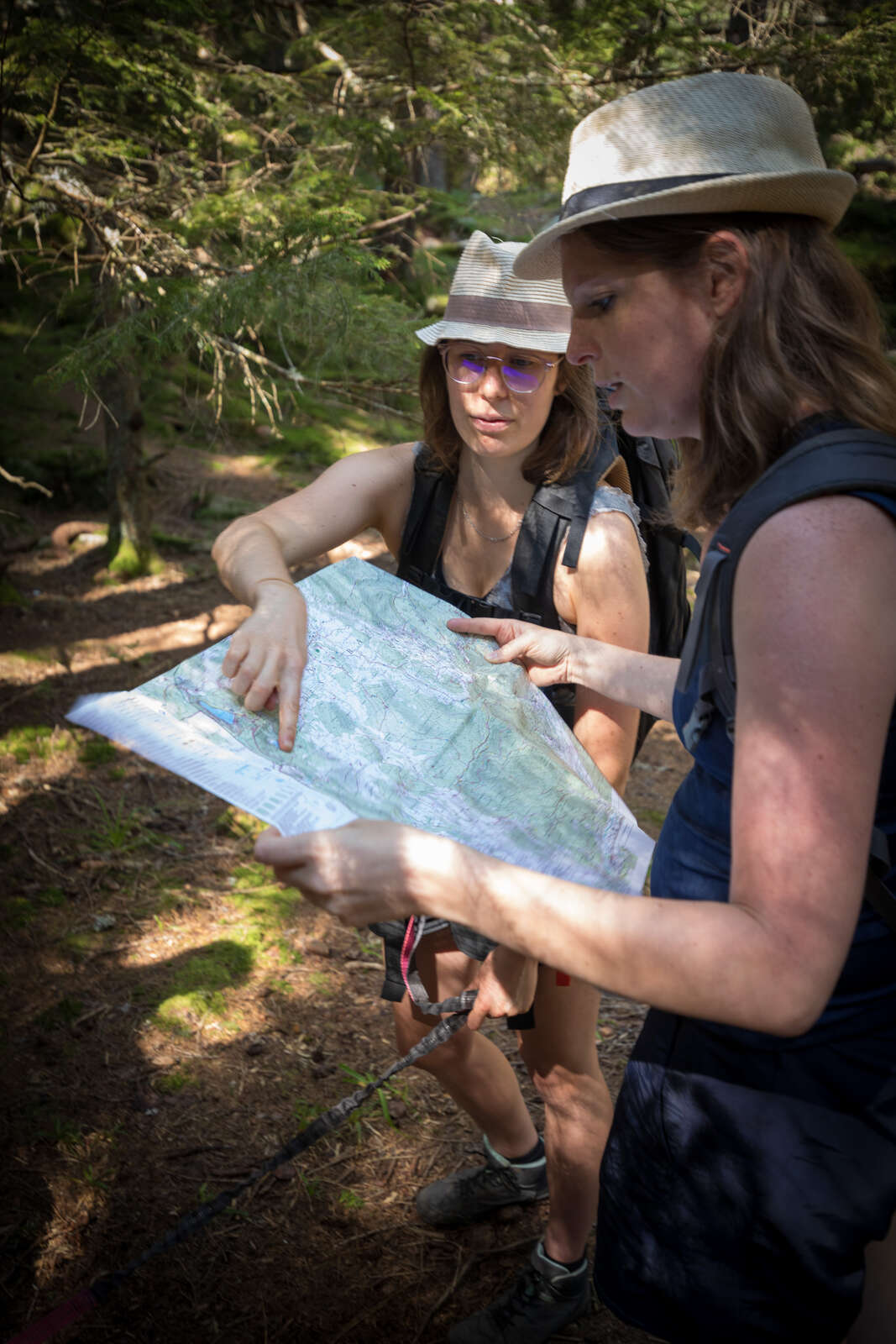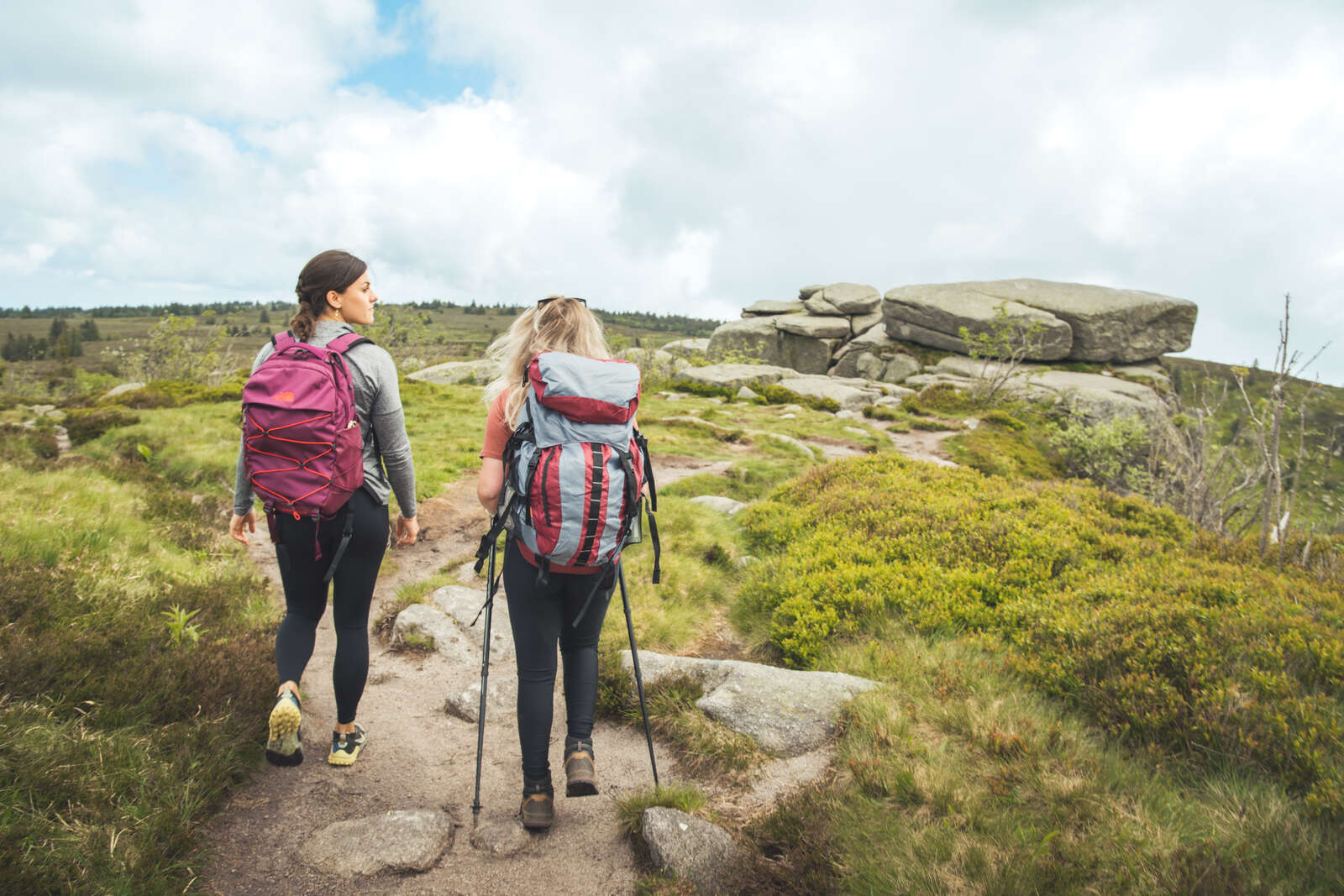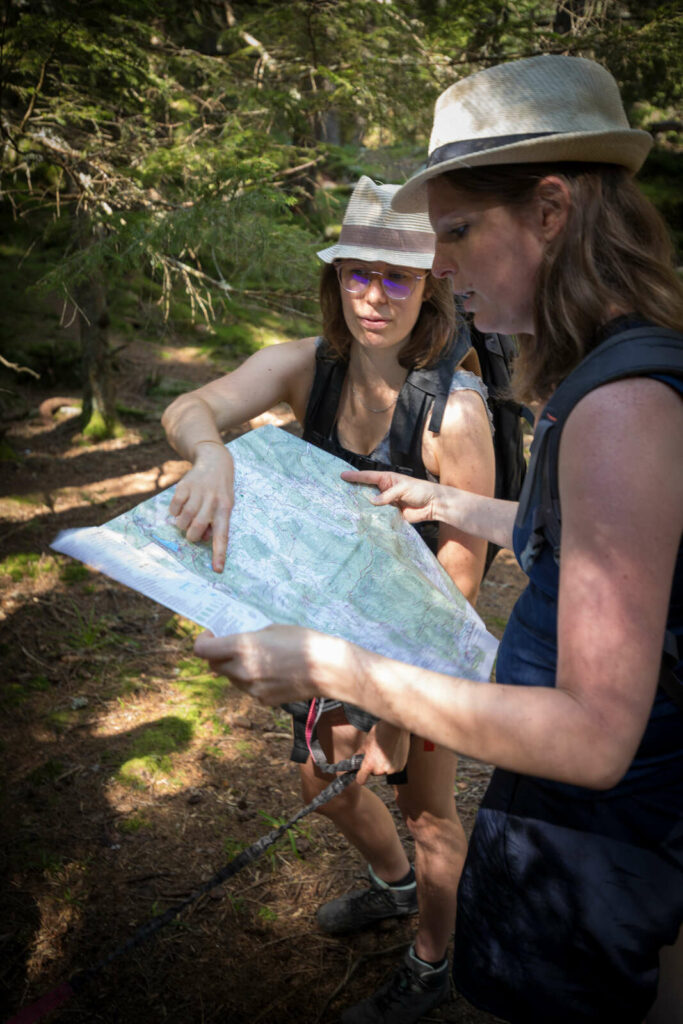
What is bivouacking?
Bivouacking involves spending a night outdoors with minimal equipment, often in a spirit of itinerancy.
Unlike traditional camping, bivouacking is done for a single night in non-designated areas.
In the Vosges, this practice is tolerated under certain conditions, as long as you respect the environment and local regulations. This includes not leaving any traces, not lighting fires, and departing at sunrise.
If you set up on private land, you must have the owner’s permission.
How to have a successful bivouac around the Lac Blanc resort
For a successful bivouac, preparation is key. First, choose your equipment carefully: a light tent (in some areas, it may not be allowed), a sleeping bag suitable for mountain temperatures, and an insulated sleeping mat, along with warm clothes for the night.
Weather conditions in the Vosges can change quickly, with strong winds and frequent storms in summer, so always check the forecast before setting off.
Set up your camp in a flat, sheltered spot, away from ridges often exposed to strong winds, such as the foehn effect.”
Bivouacking, the best friend of the itinerant adventurer
Starting from Lac Blanc, you’ll find a multitude of hiking trails that allow you to experience bivouacking and embrace the adventure of roaming.
From Lac Blanc, you’ll find a multitude of hiking trails, that allow you to experience bivouacking and embrace the adventure of itinerant travel.
In one or more stages, you can explore the beauty of the Vosges Massif while spending nights under the stars. It’s recommended to plan your stages in advance to avoid areas where bivouacking is prohibited and to obtain necessary permissions if you wish to set up on private land.
Indeed, certain protected areas, like nature reserves and Natura 2000 sites, have strict restrictions to protect local biodiversity.
Want to embark on the itinerant adventure but not alone? Reach out to one of our professional mountain guides!
Protected areas in the Vosges with restrictions
The Ballons des Vosges Regional Nature Park contains several types of protected areas, such as nature reserves and Natura 2000 zones. These areas are designed to preserve rare species and sensitive habitats.
For example, bivouacking is prohibited in National Nature Reserves, and it’s often necessary to stay on marked trails in certain areas to avoid disturbing wildlife. Before setting out, it’s advisable to check the Quiétude Attitude website, which lists areas where bivouacking is permitted.
Below, you’ll find a summary of the regulations in the four zones located within the Lac Blanc resort area. Outside these zones, different regulations apply, so make sure to familiarise yourself with them before planning your bivouac.
Biotope Protection Order: Le Louschbach
National Nature Reserve: Tanet-Gazon-du-Faing
Attention: This protected area includes a sub-zone where access is strictly prohibited.
Camping is prohibited all year round, regardless of the type of shelter, in the Tanet Gazon du Faing nature reserve.
Bivouacking is permitted without a shelter and only for one night.
Directed Biological Reserve: Deux Lacs
Camping is tolerated in the Deux Lacs Biological Reserve.
There is no specific prohibition on bivouacking, but it is restricted to marked trails.
Biotope Protection Order: La Tête des Faux
Camping and bivouacking are prohibited all year round in the area covered by the Biotope Protection Order of La Tête des Faux.
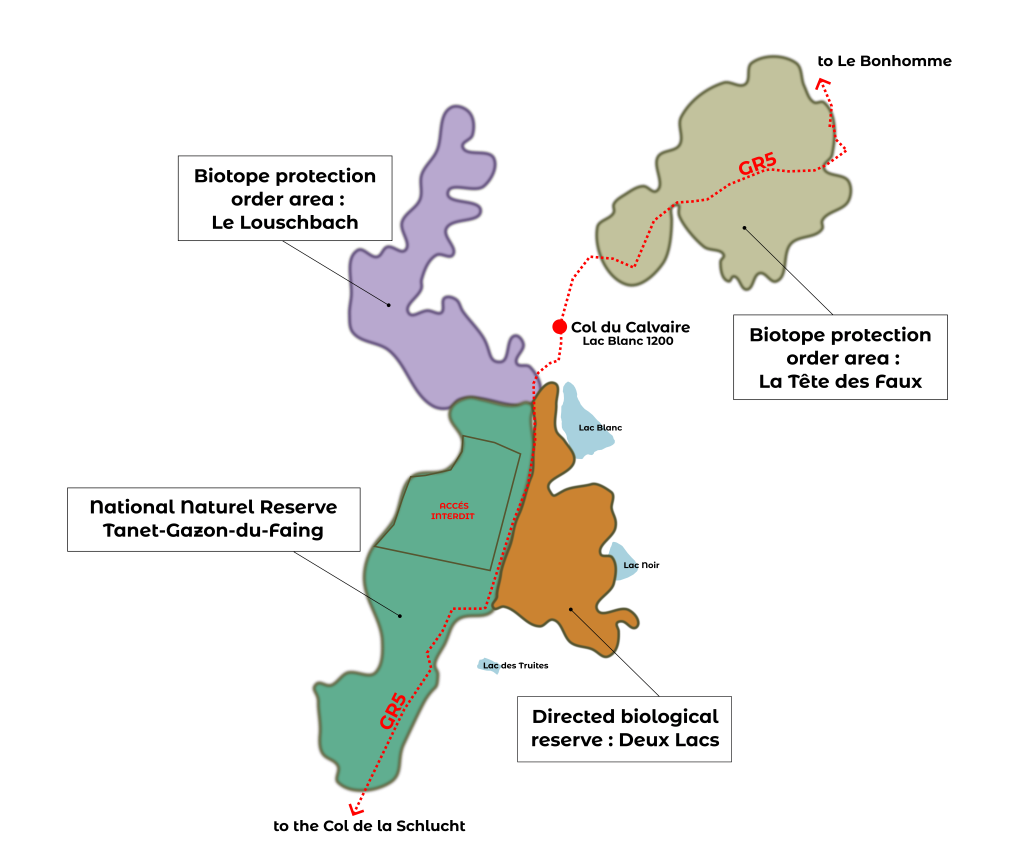
Quiet Zones
In addition to the four main areas, quiet zones exist within the territory. In these zones, bivouacking is permitted, but it is essential to stay on the marked trails. Access is strictly prohibited off these trails.
Practicing responsible bivouacking
When going on a bivouac, it is essential to not only follow the rules but also adopt responsible behavior to minimize your impact on nature. This starts with being discreet: the less noticeable you are, the less you’ll disturb the surrounding ecosystem.
For instance, always set up your tent (if permitted) near marked trails. If the weather allows, pitch your tent as late as possible and wake up at dawn to leave early. Avoid making fires (this is prohibited in all protected areas of the Ballons des Vosges Regional Nature Park) and opt for cold meals instead.
If you’re in a group, keep noise levels to a minimum, speak softly, and only use a headlamp when necessary, setting it to the lowest brightness to reduce light pollution.
Finally, it is essential not to leave your waste in nature: everything you bring (packaging, tissues, etc.) must leave with you!
